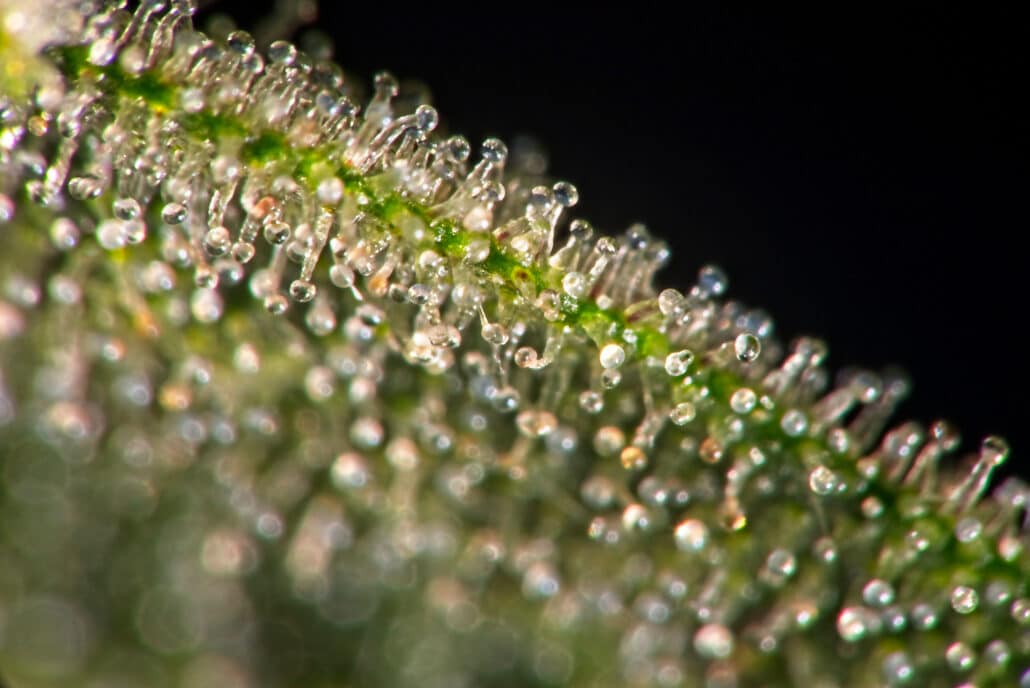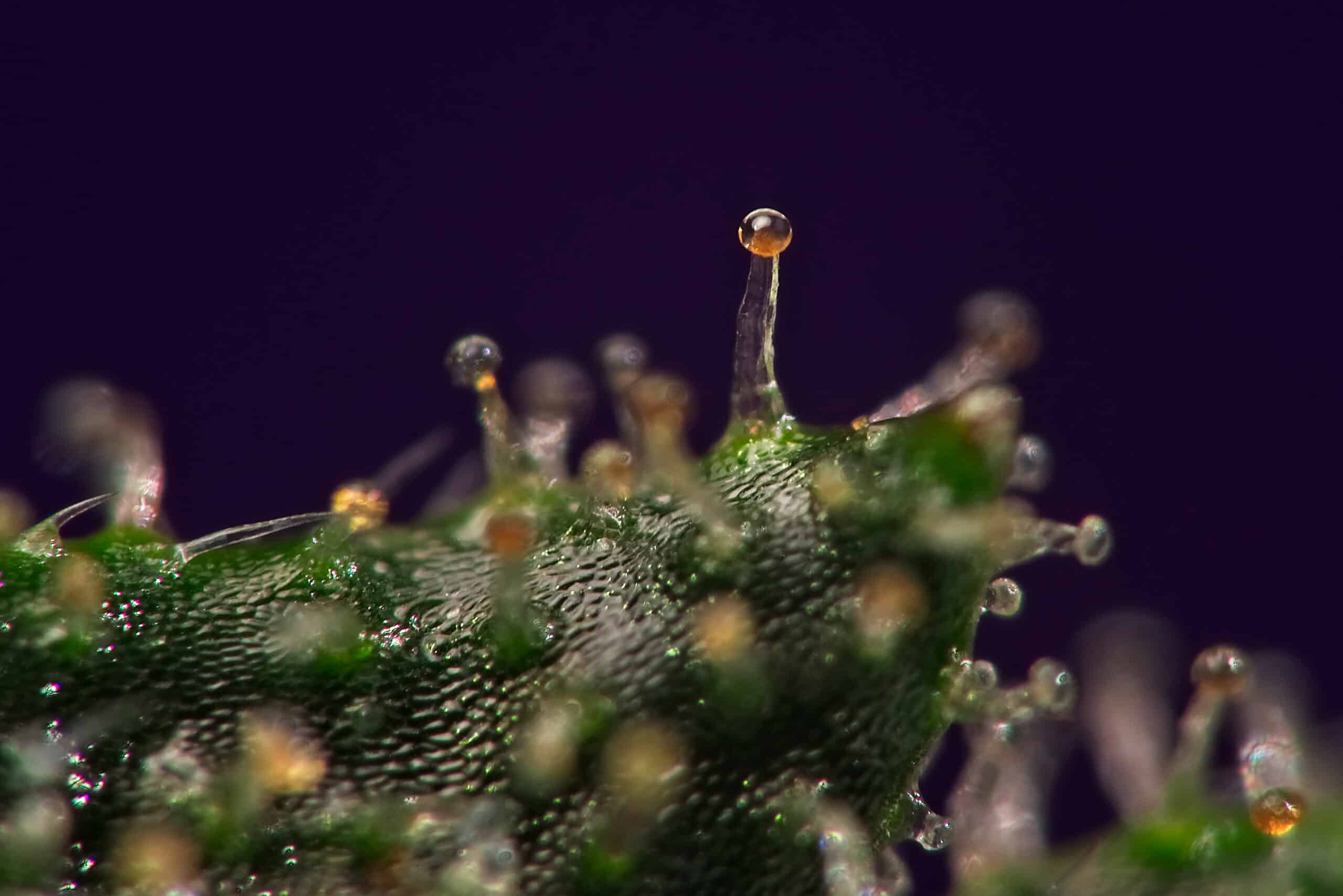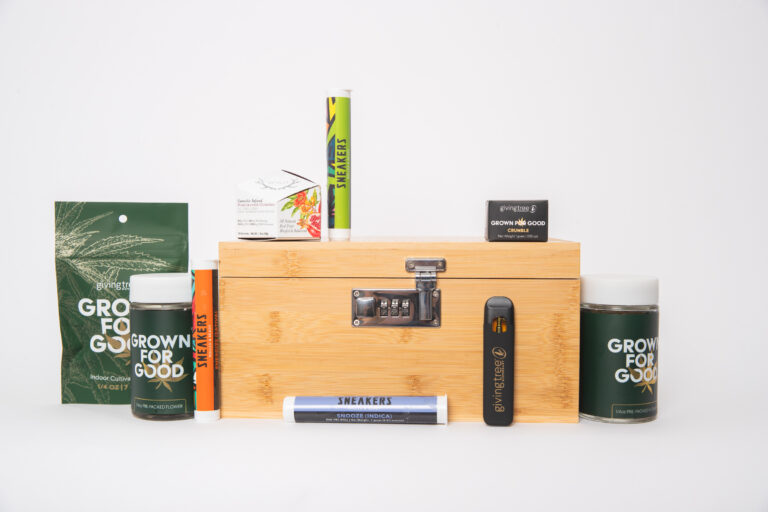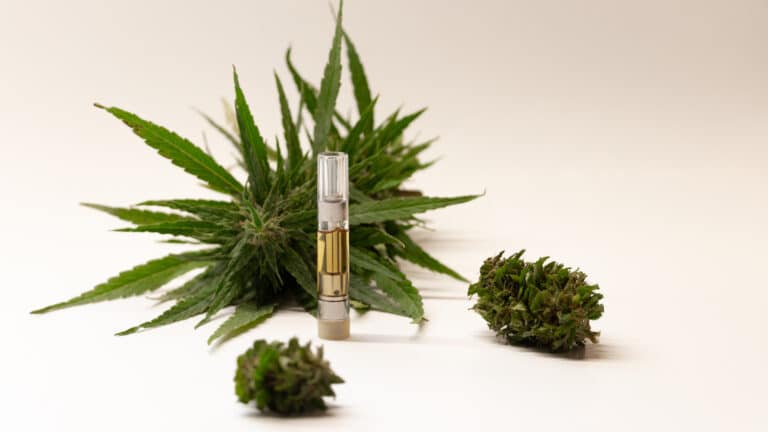Maintaining Trichome Quality During Harvesting
For anyone seeking an excellent cannabis experience, understanding exactly what to look for in top-quality marijuana is key. And even though choosing a reputable dispensary is essential, equally important is everything that happens to your cannabis before it’s placed on dispensary shelves.
There’s a direct connection between cannabis quality and the cultivation and harvest processes, particularly when it comes to potency, flavor, and aroma. When cultivators are well-versed in the science of cannabis, they can implement proper practices to elevate the quality of their product – and when you know the basics about cannabis trichomes, you can be an informed and confident consumer.
What are Trichomes?
If you were to look at the buds of a cannabis plant under a microscope, you would see that it is covered in tiny, mushroom-shaped hairs known as trichomes.
Cannabis trichomes are like the microscopic “factories” that produce and contain all of the cannabinoids, terpenes, and flavonoids that make your favorite strains so unique, potent, and effective. On the cannabis plant, trichomes play an important role in defending the plant against predators and environmental damage.
There are many different types of trichomes in a broad range of sizes and shapes. Specifically, the trichomes on weed are most commonly found in these three forms:
- Bulbous trichomes are the smallest type and cover the entire surface of the plant. They are composed of just a small handful of cells, measuring between 10 and 15 micrometers.
- Capitate sessile trichomes are somewhat larger and are made up of a head and a stalk. A cannabis plant has more capitate sessile trichomes than bulbous trichomes.
- Capitate-stalked trichomes are the largest of the three and can be seen by the naked eye (measuring between 50 and 100 micrometers). The structure of this trichome type features a stalk connected to a basal cell, which is connected to a sizable gland head. In this gland head, terpenoid and cannabinoid synthesis take place.
All three trichome types produce cannabinoids. However, capitate-stalked trichomes are the most abundant type, surrounding the calyxes of budding cannabis flowers and generating a significant concentration of essential oils.

The Different Stages of Trichomes
Throughout a cannabis plant’s lifespan, the trichomes will pass through various stages, changing color and signaling a different phase in the overall life cycle of the plant.
Why does this matter for you as a cannabis consumer? Once the trichomes have reached the proper stage, harvest can take place – no earlier, or else the quality of the product simply won’t measure up. Pinpointing the best time to harvest cannabis is just one of the crucial components of proper cultivation.
The color of cannabis trichomes transitions from clear to cloudy to a deep amber-brown, and each of these phases represents changes in the plant and its cannabinoid content.
Clear Trichomes
When a cannabis plant is just beginning to flower, it will start to develop clear, glassy trichomes. When translucent, trichome glands have just started to produce resin, and tetrahydrocannabinol (THC) is at its highest concentration level. But because other cannabinoids have not yet formed, it is not time to harvest the plant.
Cloudy Trichomes
As the trichomes become cloudy (and eventually opaque), the cultivator must keep a close eye on the cannabis plants. The ideal harvest time is approaching: once 50 to 70 percent of the trichomes are completely cloudy or amber, the cultivator can harvest, and the buds will be highly euphoric and fantastically potent.
Amber/Brown Trichomes
Trichomes that are amber/brown are a sure sign that it is the perfect time to harvest cannabis. If the goal is to deliver THC-heavy cannabis, the cultivator will harvest right at the beginning of the transition to amber/brown trichomes. Once all the trichomes have shifted color, the THC has converted to cannabinol (CBN), a cannabinoid that induces relaxing effects rather than energizing euphoria.
Therefore, the cultivator has to know exactly what they are aiming for in the final product – and time the harvest accordingly.
How to Maintain Trichome Quality When Harvesting
Whether the cannabis will be used for flowers, concentrates, extracts, or another product type, the quality and potency heavily rely on how well the trichomes are preserved during harvest. Trichomes are extremely delicate, so a cultivator has to take specific steps to protect them.
As a consumer, you want to be confident that you are choosing a product that comes from a respected cultivator with a track record for quality – so that you can be sure that they are following the proper steps for trichome preservation.
Here is how a cannabis cultivator safeguards the health and quality of trichomes during the harvest process:
Flushing: Flushing cannabis involves treating the plant with water (with moderate pH levels) rather than a nutrient solution. A cultivator should be flushing the plant periodically throughout the growing process in order to effectively “flush out” salts, nutrients, and minerals from the growing medium and allow the plants to absorb ample nutrients.
The most crucial flush will be completed right before harvest so that the plant can utilize any stored nutrients. The result is better-preserved trichomes and an overall improved final product.
Removing large fan leaves: The famous, multi-segmented leaves that we all associate with cannabis are actually not useful to the plant itself and, despite their iconic status, should be regularly removed during growth.
Trimming off these leaves (a process called “defoliation”) allows the buds to efficiently absorb nutrition and light. It is most important to remove these leaves during seedlings’ rapid period of growth in the vegetative state and also essential when the plant begins to flower.
- Selecting a trimming style: At harvest time, a cultivator must decide between a wet vs. dry trim. With dry trimming, the plant will be placed in a drying room after harvest, and trimming will only occur after it is completely dried out. But with wet trimming, the plant is trimmed stalk-by-stalk immediately after harvest.
- Take precautions during drying: Whether the cultivator chooses a wet or dry trim approach, the next phase is drying the cannabis. Drying plays a key role in preserving aroma and flavor while also helping prevent mold and mildew.
However, the temperature has to be just right – too hot, and the terpenes can evaporate, destroying the cannabinoids, flavor, and aroma.
Terpenes are very volatile and can be negatively affected by a long list of factors, including:
- Heat
- Light
- Physical contact/agitation
- Oxygen
- The passing of time
This means that, at every single stage, a cultivator has to exercise proper caution. By correctly handling the flowers during propagation, harvest, and post-harvest, a cultivator can help slow down trichome degradation and, thus, preserve as many cannabinoids and terpenes as possible.
Browse Premium-Grade Cannabis from Giving Tree
Now that you know a little bit more about how to protect the quality of cannabis trichomes, you can navigate your next dispensary shopping trip like a pro. But no matter how much you know – or don’t know – about cannabis, choosing the Giving Tree guarantees an exceptional experience every time.
At our Phoenix cannabis dispensary, our knowledgeable and experienced team is here to help you choose the best products for you. And because we only carry the finest cannabis from a select, trusted group of cultivators and brands, every possible step has been taken to ensure a final first-class product.
Explore our current product specials and upcoming events to plan your visit to our dispensary in Phoenix today!
Photo Credits: Roxana Gonzalez, Gleti



